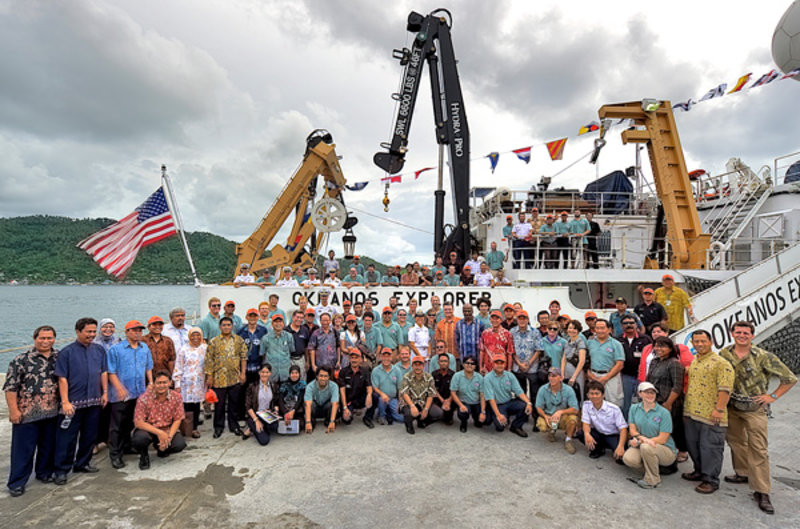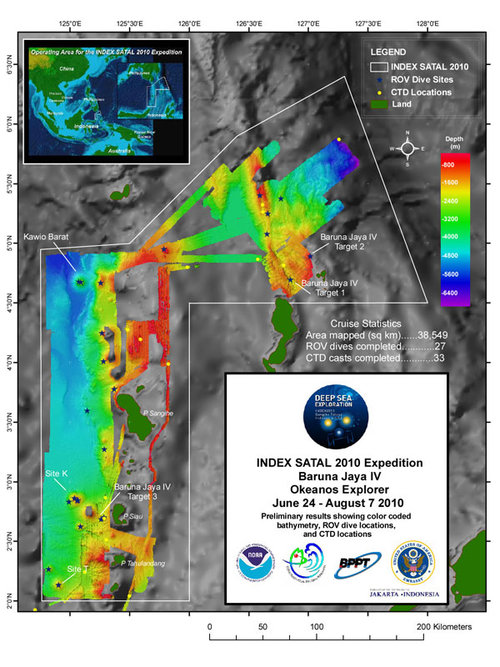The INDEX-SATAL 2010 expedition was officially brought to an end today during a closing ceremony at the Port of Bitung with crews from both NOAA Ship Okeanos Explorer and the Indonesian Research Vessel Baruna Jaya IV. Remarks about the expedition and strengthened ties between the United States and Indonesia were made by high-level officials from both the American and Indonesian government. Key people integral to the success of the expedition were recognized and tokens of appreciation were presented to the crew from both ships.

Following the joint expedition's closing ceremony, Chief Bosun Carl VerPlanck coralled participants for a final group photo. Available crew members from both NOAA Ship Okeanos Explorer and the Indonesian Research Vessel Baruna Jaya IV, as well as technicians, scientists and program managers are pictured. Image courtesy of NOAA Okeanos Explorer Program, INDEX-SATAL 2010. Download larger version (jpg, 8.4 MB).
A letter from U.S. Ambassador Cameron R. Hume congratulating the crew of NOAA Ship Okeanos Explorer highlighted the success and importance of the expedition: “Much has been learned about the world’s most diverse marine environment, and the stage has been set to learn even more in the future...The Okeanos Explorer voyage of discovery to the Sangihe Talaud region vividly illustrates how a science partnership can become a powerful tool for diplomacy and result in closer ties between our countries.”

